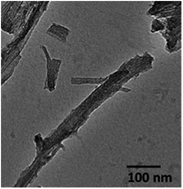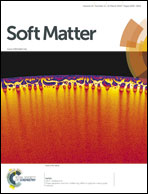Silica templating of a self-assembling peptide amphiphile that forms nanotapes†
Abstract
The peptide amphiphile C16-KTTKS templates silica polymerization, enabling the production of silica nanotape structures, imaged via electron microscopy (TEM and SEM). X-ray scattering shows that the nanotapes comprise stacked layers, as for the parent peptide amphiphile, but with a substantially increased layer spacing resulting from silica polymerization.


 Please wait while we load your content...
Please wait while we load your content...